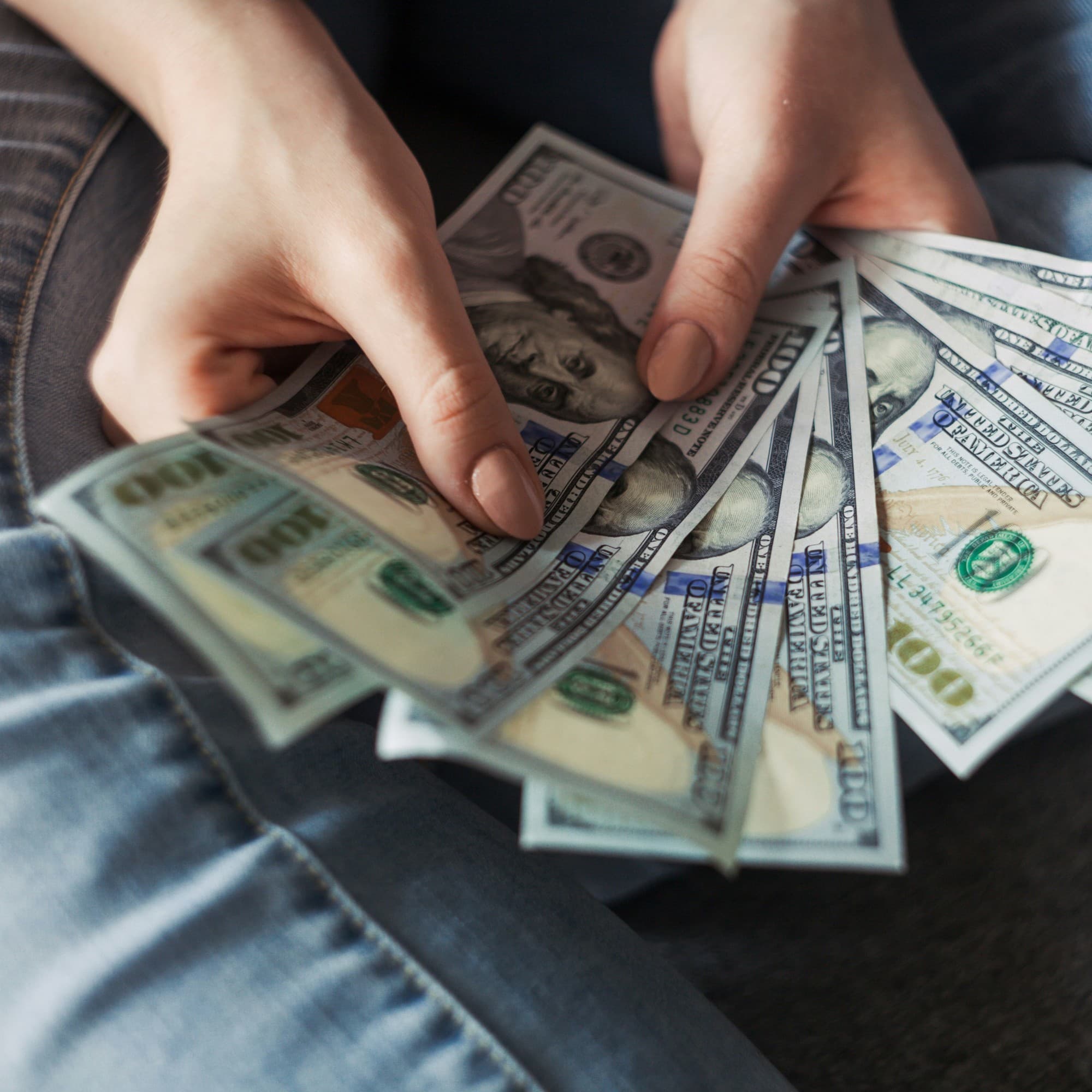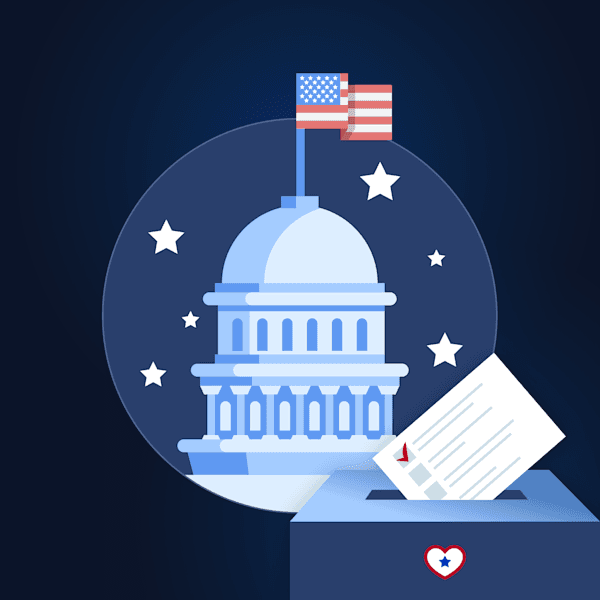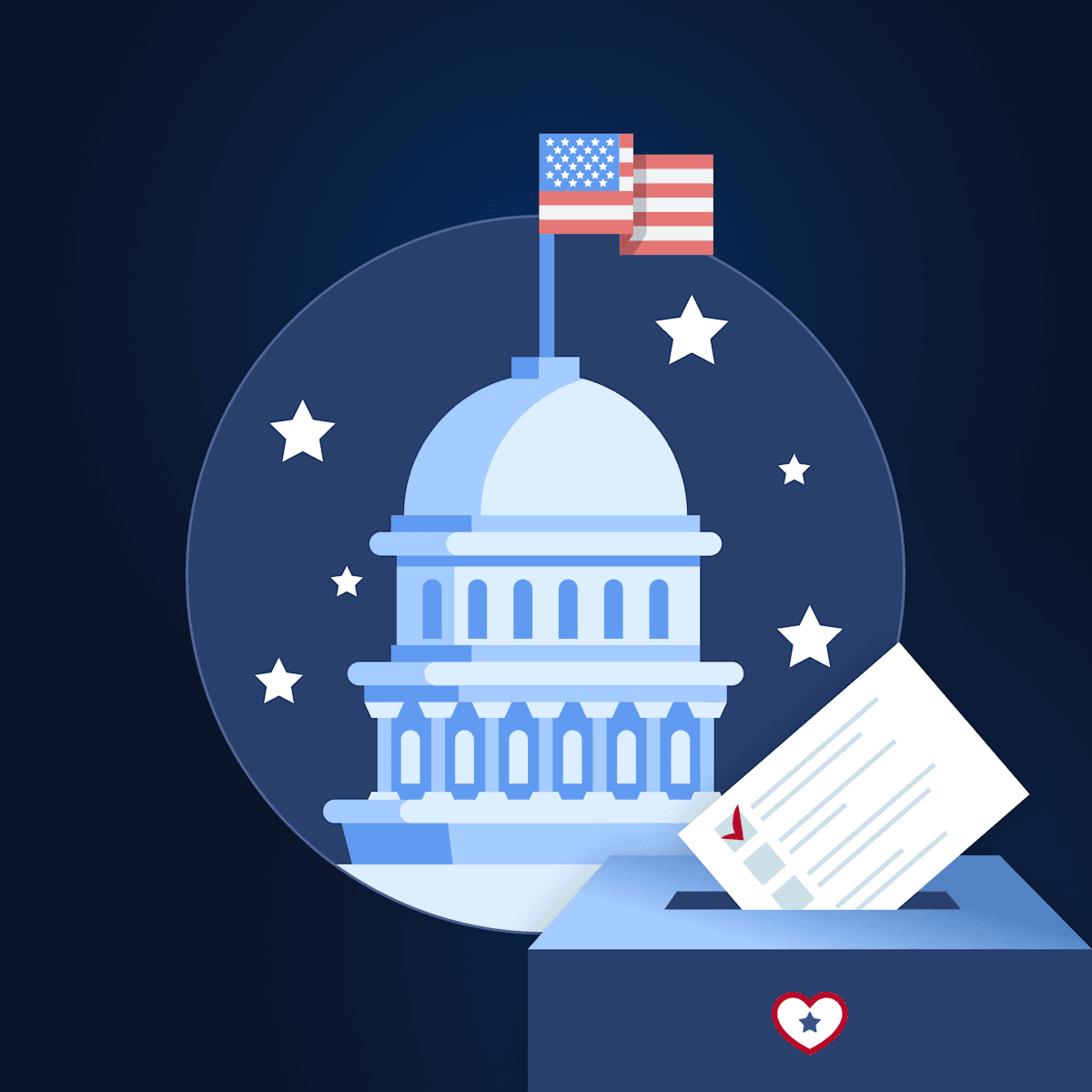
Who Is the Donor Class?
"A few wealthy individuals and corporations have bought up our private sector and now they're buying up the government. Campaign finance reform is the most important issue facing us today, because it impacts all the others. American democracy is not about billionaires being able to buy candidates and elections." ~ Sen. Bernie Sanders
If you listen closely in the corridors of power, you’ll hear whispers of a term echoing into the halls of campaign fundraisers and political strategy meetings: the "donor class." These words, which are filled with implications of influence and exclusivity, refer to a remarkably small percentage of Americans who contribute the vast majority of political donations.
Their financial contributions play a pivotal role in shaping electoral outcomes, influencing policy decisions, and, by extension, skewing the representation of American voters in the democratic process.
Join us as we delve into the origins, implications, and current state of the donor class, backed by verifiable statistics. We’ll also discuss campaign finance reform strategies to ensure a more equitable and representative political landscape.
Origins and Historical Context of the Donor Class
The term "donor class" emerged as political analysts and commentators sought to describe the increasingly noticeable phenomenon where a small segment of affluent individuals and entities contributed disproportionately large sums of money to political campaigns and parties. However, the concept and practice dates back to the Gilded Age of late-19th and early 20th-century America.
Historically, political donations have always played a critical role in American elections. However, the scale and impact of these contributions have evolved, particularly in the latter half of the 20th century and into the 21st century. Landmark legal decisions and changes in campaign finance laws have plunged us further toward a plutocracy that entrenches the power of the donor class.
This can be illustrated by simply comparing the difference in political donations in 2008 and 2012, two presidential election years that were just one Supreme Court decision apart. The 2008 presidential race between Barack Obama and John McCain was the most expensive in history at that point, with total outside spending of $338 million.
Although it was a 50% increase over totals from 2004, it was just a drop in the bucket compared to 2012. That race, which pitted Obama against Mitt Romney, netted more than $1 billion in political donations for each candidate.
The Modern Donor Class: A Statistical Overview
Recent statistics paint a striking picture of the donor class's dominance. According to a report by PolitiFact, only about 0.52% of Americans contribute more than $200 to political campaigns, yet these contributions account for a significant majority of total campaign financing.
In the 2022 election cycle, for example, this small segment contributed billions of dollars, highlighting the vast financial chasm between the donor class and the average American voter.
The influence of the donor class is not limited to direct contributions to campaigns. Super political action committees (Super PACs) and other political organizations that can receive unlimited contributions from individuals, corporations, and unions also serve as vehicles for the donor class to exert its influence.
However, it was the 2010 Supreme Court ruling in Citizens United v. FEC that opened the floodgates for unlimited independent spending on political campaigns, further solidifying the donor class's influence.
Naming the Biggest Players
Creating a comprehensive and up-to-date list of major political donors in the United States, especially with precise amounts and destinations, involves looking at continuously evolving data. For the most current figures and additional details, resources like the Federal Election Commission (FEC) and nonprofit organizations that track political contributions, such as OpenSecrets, are invaluable.
Many of the names of individual donors and organizations may change over time (for example, the remaining Koch brother has allegedly bowed out of politics), but there are some perpetual big donors who have had an outsized impact on American politics.
The following names and numbers are provided by data gathered by OpenSecrets:
Individual Political Big Spenders
Michael Bloomberg: Former mayor of New York City and business mogul, Michael Bloomberg has contributed billions of dollars to various campaigns, PACs, and causes, primarily supporting gun control, climate change initiatives, and Democratic candidates. In 2022, he donated a total of $50,278,825.
Sheldon and Miriam Adelson: The late Sheldon Adelson, a casino magnate, and his wife, Miriam, have been among the top donors to Republican candidates and causes, contributing hundreds of millions of dollars through various election cycles. In 2022, the Adelsons donated a total of $25,065,900, all to Republicans.
Richard and Elizabeth A. Uihlein: The founder of Uline Corporation and his wife landed in the number-two spot on OpenSecrets’ list of top individual political donors. During the 2022 election cycle the couple donated a total of $89,775,989, the bulk of which was in dark money donations to Republicans.
George Soros: Through his network of organizations, the financier and philanthropist George Soros has been a substantial donor to liberal and progressive causes and candidates globally, including significant contributions in the United States. Soros was the top individual donor during the 2022 election cycle, with contributions totalling $178,820,550 in hard and dark money donations, all to Democratic candidates and causes.
Jeffrey S. Yass: A name that has been in the news a lot lately, Jeffrey Yass is a billionaire donor from Pennsylvania. Since 2021, he has contributed more than $50 million dollars to various conservative PACs, candidates, and organizations.
Organizations With Deep Pockets Buying Influence
With a few exceptions, organizations tend to be a little more “democratic” in their donations. Although most groups favor one side of the establishment over the other, they tend to give freely to both Republicans and Democrats, albeit in a lopsided proportion.
For example, FTX.US contributed a total of $77,253,955 in 2022 — nearly $50 million to Democratic candidates and almost $24.5 million to Republicans. The top 20 donor organizations in 2022 can be found here (note that among the top individual and organizational donors on each list are the same people and their respective organizations).
Some of the biggest corporate and non-profit donors include:
National Rifle Association (NRA): A prominent lobby group and political donor advocating for gun rights, contributing millions to political campaigns, primarily supporting Republican candidates. As of 2023, the gun rights group had donated a total of $27,413,008.
Americans for Prosperity: Founded by David and Charles Koch, this organization is one of the leading conservative advocacy groups in the United States, spending millions on elections and often supporting Republican candidates and causes. In 2022, Americans for Prosperity donated a total of $69,494,884 in outside spending. However, the Koch brothers increased their overall total of contributions when you add in the $28,574,180 donated by Koch Industries.
Service Employees International Union (SEIU): One of the largest labor unions in the United States, SEIU has contributed millions to political campaigns, primarily supporting Democratic candidates and labor rights initiatives. In 2022, SEIU gave a total of $22,313,746, all but $97 of which went to Democrats.
Soros Management Fund: The top donor among this group, the hedge fund founded by George Soros donated an additional $179,937,584 to Democratic candidates and causes in 2022.
Imagine what that kind of money could do if it were used for the betterment of society instead of for buying politicians.
The Implications of the Donor Class's Influence
What the donor class expects for their money is mostly influence, whether it’s toward social policy, more favorable economic policies, or regulatory legislative input. They tend to come from the more extreme ends of the political spectrum, and they contribute heavily to political polarization.
The disproportionate influence of the donor class has profound implications for American democracy. This is born out in a study conducted by Michael Barber, assistant professor of political science at Brigham Young University, which found that politicians are more responsive to the needs of donors than to the people who elect them to office.
Another study, published by Social Science Quarterly, found that not only are representatives less responsive to their voters when they rely on outside money, but they also become more extreme in their views to reflect those of their donors. The fight for sensible gun legislation is a prime example of this phenomenon.
Catering to the donor class skews political representation by amplifying the voices of a few at the expense of the many. This dynamic can lead to policy decisions that favor the interests of the wealthy and powerful over those of the broader public.
The reliance on large donations can also deter candidates from pursuing policies that might be unpopular with wealthy donors, even if such policies would benefit the majority of Americans.
Finally, the financial arms race in politics discourages potential candidates without access to wealthy networks from running for office, limiting the diversity of perspectives in political leadership. This especially impacts independent and third-party candidates, who don’t have the backing of the well-funded establishment parties.
The Independent Movement and Campaign Finance Reform
Recognizing the corrosive impact of the donor class on democracy, there has been a growing movement towards campaign finance reform. This movement aims to reduce the influence of money in politics and ensure that all Americans have a fair say in elections.
Strategies for campaign finance reform include:
Public Financing of Campaigns: Implementing systems where public funds match small donations at a multiple rate can amplify the voice of the average voter and reduce candidates' reliance on large donors.
Limiting Contributions to Super PACs: Introducing limits on how much individuals can contribute to Super PACs would reduce the outsized influence of the wealthiest donors.
Transparency and Disclosure Requirements: Strengthening laws that require the disclosure of political spending by outside groups can help voters understand who is trying to influence elections and public policy.
Constitutional Amendment: Overturning decisions like Citizens United could require a constitutional amendment to assert the government's ability to limit corporate spending in elections.
The independent movement plays a crucial role in pushing for these reforms. By prioritizing the health of democracy over partisan interests, independent candidates and voters can advocate for changes that promise a more level playing field in the political arena.
The Path Forward
The dominance of the donor class in American politics poses significant challenges to the principles of democracy and equal representation. While the road to reform is fraught with political and legal obstacles, the importance of ensuring that all Americans have a fair say in elections cannot be overstated.
Through a combination of public advocacy, legislative action, and constitutional amendments, it’s possible to curtail the influence of the donor class and move towards a more equitable and representative political system. The independent movement, along with concerned citizens across the political spectrum, must continue to advocate for these vital reforms. The health of American democracy depends on it.
The path forward demands a collective awakening to the realities of our current political finance system, an unwavering commitment to the principles of democracy, and a concerted effort to implement the necessary reforms. It’s a path that leads away from the shadows of undue influence and towards the light of inclusivity and fairness.
Join the Movement for Change
The fight against the disproportionate influence of the donor class is a fight for the soul of American democracy. Through informed advocacy, relentless activism, and the pursuit of legislative reform, we can redefine the landscape of political financing. Together, we can build a democracy that truly reflects the will and interests of the American people, ensuring a fair and just society for future generations.
The independent movement has a pivotal role to play in this endeavor. GoodParty.org is proud to be at the forefront of championing the cause of campaign finance reform. Together, we can reclaim our democracy from the narrow interests of the donor class and transform our political system into one that serves the broader public interest.
Want to learn how you can get involved? Check out opportunities to volunteer with GoodParty.org and help move the needle on campaign finance reform.
Photo by Alexander Mils on Unsplash

